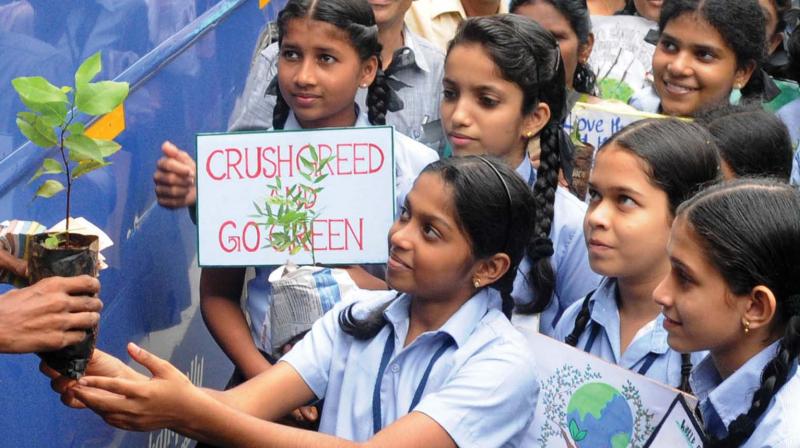Hoax in the name of saplings

KOCHI: Mahabali, the benevolent ruler of Kerala who was left in the lurch without an inch of land by the wily Vamana, is one of the most abiding Malayali myths. The political class - the modern day incarnation of the Vamana - known for re-enacting the trickery of the mendacious Brahmin in myriad ways may soon leave the state without an inch of land other than planting saplings. Had the sapling planting mission undertaken every year on June 5 to mark the World Environment Day in the past 30 years succeeded in meeting its objective, Kerala would have been left without an inch of land for planting anymore saplings.
The cumulative data of the saplings planted in past 30 years shows that the state would have been richer by 13.5 lakh hectares of planted trees ranging from 30 years to one year, says RTI activist and former deputy drug controller N.S. Alexander. "The secretariat premise and other government establishments in the state would have become a man-made forest if the saplings planting had served any meaningful purpose," he said. The ritual of planting saplings on World Environment Day started in the state in 1985 and the state agriculture department had supplied 65 lakh saplings every year for the purpose ever since. Apart from that in 2017 the state observed a world record by planting one crore sapling in a single day. In the current year the government plans to increase the same to 2 crore saplings creating another world record.
The entire exercise is one of the biggest hoaxes committed by the political class with the connivance of unscrupulous officials, says Mr Alexander who collected the data in a meticulous manner from the agriculture and forest departments. "The officials in agriculture department concede that one acre has a capacity to hold a maximum of 150 plants in full glory. We needed to take a reality check and find out whether any one of these sapling had grown into a full-fledged tree," he said.
The cost of planting the saplings has witnessed the strange phenomenon: it is going down defying the normal logic of economics and the rate of inflation. The amount given to farms for supplying 8,27,841 saplings in 2001-02 was Rs 1.62 crore but it was only Rs 71 lakh for over 10 lakh saplings in 2013-14. According to this information, the cost per sapling, which was Rs 20 in 2001-02, came down to Rs 7 in 2013-14. "There are several such hilarious details if we have the time to peruse the project in detail," Mr Alexander said.
The matter assumes importance when we learn that the agriculture and forest department together have spent around Rs 305 crore for this exercise in the past 30 years, he said. "The people of the state needed to know that a huge racket is functioning in the name of planting saplings every year," Mr Alexander said. The forest department has no record on the total number of saplings supplied to various agencies in the past many years. According to the reply given by the office of the chief forest conservator such basic data will have to be gathered from individual social forestry divisions.
Compounds of schools and other educational institutions, local bodies, offices of the electricity boards and all other government office premises in the state would have become man-made forests if even 10 per cent of the saplings planted have grown into trees. "It is high time the state government took a serious look at the annual ritual of planting saplings in the background of the lack of visibility of grown up trees across the state," Mr Alexander said. The green activists, if they are genuine in their vocation, should make a serious introspection before joining the ritual of planting saplings on June 5, Alexander said. "The situation calls for a detailed study based on the data to expose the corruption and malpractices involved in the sapling planting," he added.

